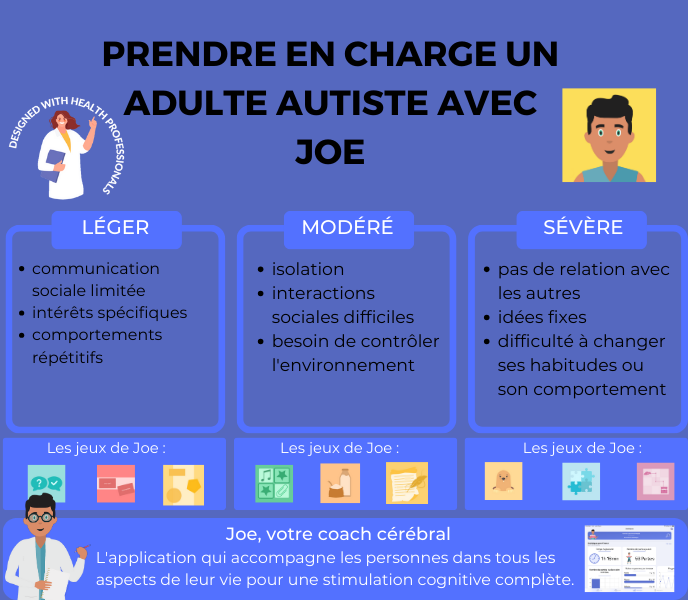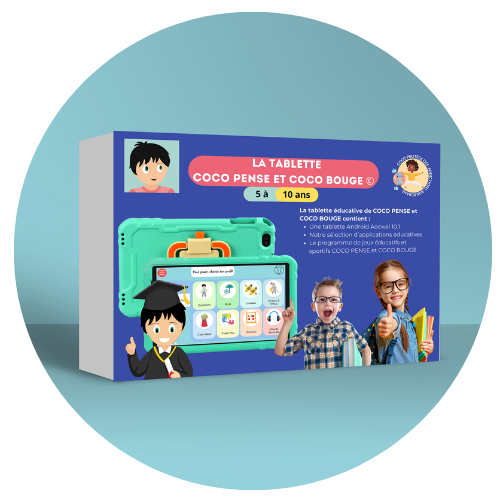People with non-verbal autism show significant differences from those with verbal autism. They often have repetitive behaviors and restricted interests, such as rocking back and forth or fixating on a specific object. These behaviors can be calming for them and help them concentrate.
Non-verbal autistic people also experience social and emotional difficulties, and it can be hard to understand their emotions, you can learn more about it here. They have difficulty establishing and maintaining relationships with others, understanding emotions and facial expressions, and interacting appropriately in different social situations. These difficulties can lead to social isolation and frustration for the autistic person.
Communication challenges for non-verbal autistic people
Non-verbal autistic people face many challenges in their day-to-day communication. They have difficulty understanding and using verbal language, which makes it difficult for them to express themselves and understand others. They may have a limited vocabulary, pronunciation difficulties and limited understanding of words and sentences.
In addition to difficulties with verbal language, non-verbal autistic people may also have problems with non-verbal communication. They may have difficulty using gestures, facial expressions and other forms of non-verbal communication to express their needs and emotions. This can lead to frustration and mutual misunderstanding between the autistic person and those around him or her.
Finally, non-verbal autistic people may encounter barriers to social interaction. They may have difficulty understanding implicit social rules, interpreting social cues and adapting to social expectations. This can make it difficult for them to make friends, participate in group activities and integrate into society.
Augmentative and alternative communication (AAC) methods for non-verbal autistic people
Faced with the communication difficulties encountered by non-verbal autistic people, there are various alternative and augmentative communication (AAC) methods that can be used to help them express themselves and understand others.
AACs include a variety of tools and strategies, such as communication boards, pictograms, Picture Exchange Communication Systems (PECS), mobile applications and electronic devices. These methods enable non-verbal autistic people to use images, symbols or written words to communicate their needs, desires and emotions.
Each AAC method has its advantages and limitations. For example, communication boards are easy to use and can be adapted to the autistic person’s individual needs. However, they may be limited in terms of vocabulary and flexibility. Mobile applications and electronic devices offer a greater variety of vocabulary and functionality, but may require a certain technological mastery.
It’s important to choose the AAC method best suited to each autistic person, taking into account their individual skills, preferences and needs. A thorough assessment by a qualified professional can help determine the most appropriate method.
Therapies and interventions for non-verbal autistic people
To enrich the support of non-verbal autistic people, a multidisciplinary approach comprising various therapies and interventions can be particularly effective. These are designed to enhance communication skills, facilitate social integration and improve overall quality of life. Here is an expanded list of available options, organized into specific categories for greater clarity:
Communication Therapies
- Facilitated communication: Using a facilitator to help the individual communicate using a keyboard or other devices. This method can sometimes be controversial, but offers benefits to some individuals.
- PECS (Picture Exchange Communication System): an image exchange system that teaches people with autism to communicate using images. It begins with the simple exchange of an image to obtain a desired object, then gradually becomes more complex.
- Mon Dico application: an application that makes it easy for non-verbal people to show their needs by displaying customizable images.
Behavioral approaches
- Pivot Response Training (PRT): Aims to develop key skills (pivots) that support broad learning and social adaptation, with an emphasis on initiating communication and motivation.
- Developmental exchange therapy (DIR/Floortime): Focuses on emotional engagement and interaction through play. This method encourages children to take the initiative in interactions, supporting their emotional and intellectual development.
Sensory and Motor Therapies
- Sensory Integration: Therapy aimed at helping the individual to better process sensory information, which can include specific physical activities, balance exercises and the use of adapted sensory equipment.
- Movement therapy: Includes approaches such as physiotherapy or the Feldenkrais method, aimed at improving body awareness, coordination and ease of movement.
Educational and Social Interventions
- Structured Teaching Programs: Specially designed learning environments that use visual aids and clear structures to facilitate learning.
- Play therapy: Encourages self-expression, problem-solving and social interaction through directed or undirected play, adapted to the individual’s interests and abilities.
- Supervised playgroups: Provide opportunities for social interaction in a structured, supportive environment, fostering the development of social skills.
Technological media
- Educational Applications and Software: Using tablets or computers with applications designed to encourage communication and learning. These tools can be customized to meet the specific needs of the individual.
- Augmentative and Alternative Communication (AAC) devices: Include electronic or non-electronic devices that help non-verbal people to communicate. These devices can range from simple communication boards to complex electronic devices.
Each of these interventions can be tailored to the unique needs of the individual, taking into account strengths, preferences and areas requiring further development. It’s crucial to take a holistic approach, in collaboration with families, therapists, and educators, to create a comprehensive support plan that maximizes the potential of each nonverbal autistic person.
Strategies to help non-verbal autistic people adapt to their environment
To help non-verbal autistic people adapt to their environment, it’s important to put in place environmental adaptations that promote communication and participation.
This can include creating a calm, structured environment, with predictable routines and visual aids such as visual boards and visual schedules. These visual aids help non-verbal autistic people to understand expectations, anticipate transitions and find their bearings in time.
It’s also important to put strategies in place to manage difficult behavior. This can include the use of behavior management techniques such as positive reinforcement, selective ignoring and redirection. It’s essential to adopt an individualized approach, taking into account the specific needs of each autistic person.
The specific educational needs of non-verbal autistic people

The educational needs of non-verbal autistic people are complex and require a holistic approach that goes beyond traditional teaching methods. To ensure their optimal development and successful inclusion in the school environment, a number of specific adaptations and interventions need to be implemented.
Pedagogical adaptations and aids
- Use of visual aids: Communication boards, pictograms and augmentative communication applications play a key role in providing alternative means of communication.
- Multisensory approaches: Teaching that integrates visual, auditory and kinaesthetic stimuli can facilitate learning in non-verbal autistic children, engaging different senses to reinforce understanding.
- Individualized teaching strategies: Since each non-verbal autistic person has unique needs, educational plans must be customized to fit their specific skills, interests and challenges.
Therapeutic Support
- Speech therapy: Essential for developing alternative communication skills, speech therapy aims to maximize each individual’s communicative potential.
- Occupational therapy: This approach helps improve fine and gross motor skills, as well as sensory processing skills, which are essential for success in school and everyday life.
Specialized Educational Programs
- Adapted learning environments: Classrooms specially designed to meet sensory and behavioral needs can reduce anxiety and promote concentration.
- Specialized training for teachers: Educators trained to understand and meet the specific needs of non-verbal autistic students are crucial to a positive educational experience.
Strategies for School Inclusion
- Autism awareness and training: Educating the school community about autism helps create a more inclusive and empathetic environment.
- Peer support and mentoring: Peer support programs can encourage social inclusion and provide non-verbal autistic students with positive role models.
- Individualized accommod ations: Adapting assessment methods, enabling the use of technology in the classroom, and adjusting the pace of learning are examples of modifications that may be necessary.
Meeting the educational needs of non-verbal autistic people requires a commitment to providing tailored support that respects their unique way of perceiving and interacting with the world. By integrating targeted educational adaptations, specialized therapeutic support, adapted educational programs, and effective inclusion strategies, educators and schools can offer these students the tools they need to succeed and thrive in their educational journey and beyond.
Challenges and opportunities for families of non-verbal autistic people
Families of non-verbal autistic people face many challenges in their daily lives. Non-verbal autism can have a significant impact on family life, including family relationships, daily activities and social interactions.
Families may also have difficulty finding suitable services for their non-verbal autistic child. There may be waiting lists for assessment and diagnostic services, as well as limited resources in some regions. This can lead to frustration and a sense of isolation for families.
However, there are also opportunities for families of non-verbal autistic people. Advances in research into non-verbal autism have led to a better understanding of this condition and the identification of effective interventions. In addition, there are many resources and supports available to families, such as associations and support organizations, health and education professionals, as well as government programs and financial aid.
Resources and supports available for families and caregivers of non-verbal autistic people
Future prospects for non-verbal autistic people and their inclusion in society.
Non-verbal autistic people have unique potential and specific talents that can be valued and developed. It is important to recognize their diversity and promote their inclusion in society.
Advances in non-verbal autism research continue to provide new knowledge and new interventions to support non-verbal autistic people. It is essential to continue investing in research and promoting a better understanding of non-verbal autism.
There are also initiatives to promote the social and professional inclusion of non-verbal autistic people. This can include adapted vocational training programs, workplace accommodation measures and awareness campaigns to promote acceptance and inclusion.
However, there are still many challenges ahead for a more inclusive society that respects diversity. It is essential to continue to raise awareness of non-verbal autism, fight stigma and promote equal opportunities for non-verbal autistic people. By working together, we can create a world where everyone, regardless of their ability to communicate, is valued and included.
MY DICTIONARY TO FOSTER COMMUNICATION
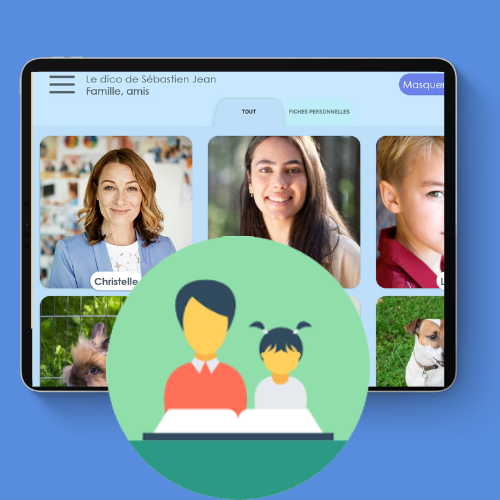
AND FOR MORE INFORMATION
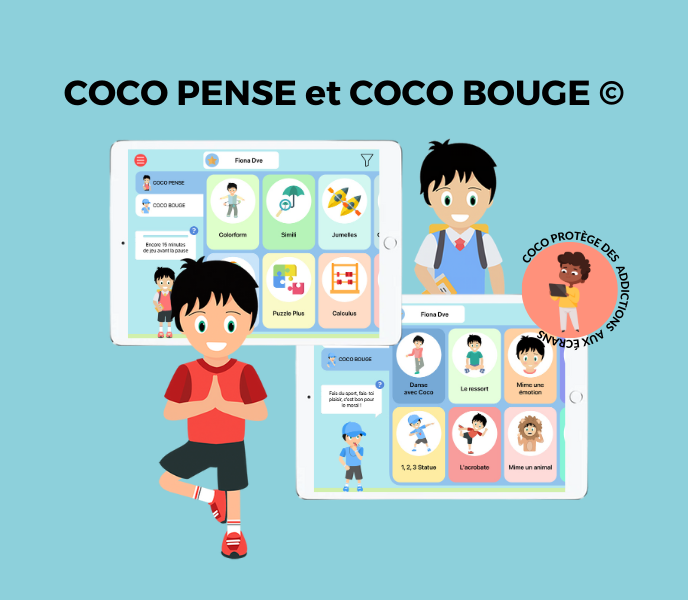
COCO, FOR AUTISTIC CHILDREN
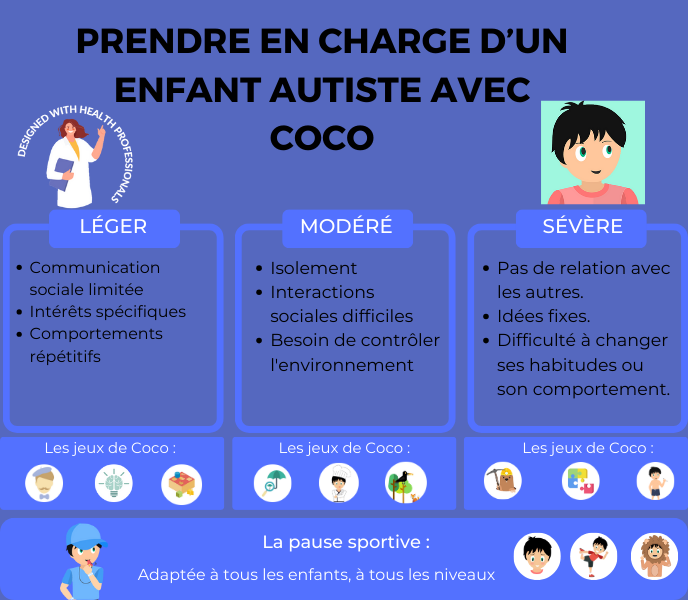
ACCOMPANYING AN AUTISTIC CHILD
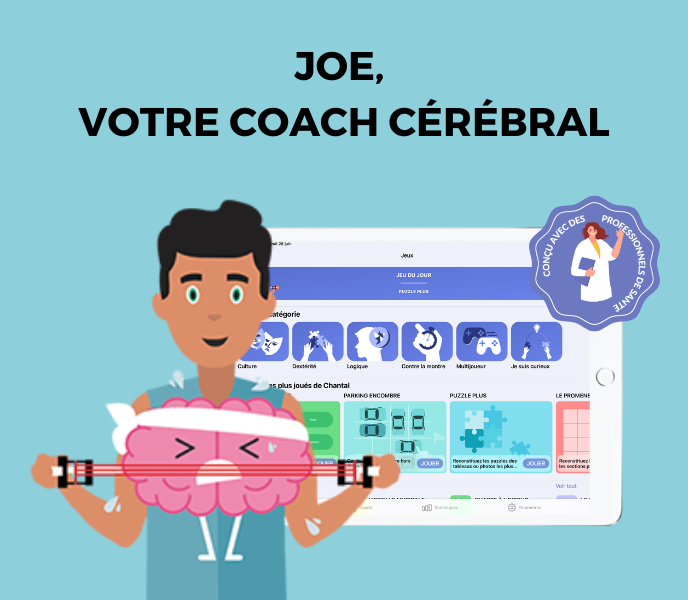
JOE, FOR AUTISTIC ADULTS
Other articles that might interest you:
Using Technology to Enhance Communication in Autism Speech Therapy
Autism Spectrum Disorder (ASD) presents unique challenges in communication, making speech therapy an essential...
Effective Autism Behavior Therapy: Improving Outcomes
Autism is a complex neurodevelopmental disorder that affects individuals in various ways. It is characterized by...
Autism Therapy at Home: Effective Strategies
Autism Spectrum Disorder (ASD) is a neurodevelopmental disorder that affects individuals in various ways. It is...


